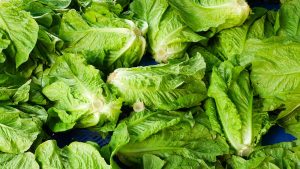The normal folks who I hang out with at the hockey arena have already started asking when they can start eating Romaine again (who knew there were so many Caesar fans).
FDA’s answer to when is soon
Some places never stopped serving it.
Earlier today I told Korin Miller at Yahoo the below:
If you happen to visit a restaurant that tries to claim its romaine is safe, it’s really best to avoid the food. “I would send it back,” Benjamin Chapman, an assistant professor and food safety extension specialist at North Carolina State University, tells Yahoo Lifestyle. “When the CDC comes out with a message that says ‘Don’t eat romaine lettuce,’ you should heed that advice,” he says. “Right now, we don’t have any indication that it’s romaine from any certain part of the country or a certain company. It’s a standing blanket statement.”
And now we’ve got more information (that’s how quickly this stuff moves).
FDA announced late today that they have narrowed their investigation to field grown Romaine from Central Coast growing regions of northern and central California.
All other lettuce is as safe as it was last week before the announcement.
FDA is taking things a step further, in a really positive way in concept – asking producers to label where it came from.
Based on discussions with producers and distributors, romaine lettuce entering the market will now be labeled with a harvest location and a harvest date or labeled as being hydroponically- or greenhouse-grown. If it does not have this information, you should not eat or use it.
There is no recommendation for consumers or retailers to avoid using romaine lettuce that is certain to have been harvested from areas outside of the Central Coast growing regions of northern and central California. For example, romaine lettuce harvested from areas that include, but are not limited to the desert growing region near Yuma, the California desert growing region near Imperial County and Riverside County, the state of Florida, and Mexico, does not appear to be related to the current outbreak. Additionally, there is no evidence hydroponically- and greenhouse-grown romaine is related to the current outbreak.
During this new stage of the investigation, it is vital that consumers and retailers have an easy way to identify romaine lettuce by both harvest date and harvest location. Labeling with this information on each bag of romaine or signage in stores where labels are not an option would easily differentiate for consumers romaine from unaffected growing regions.
